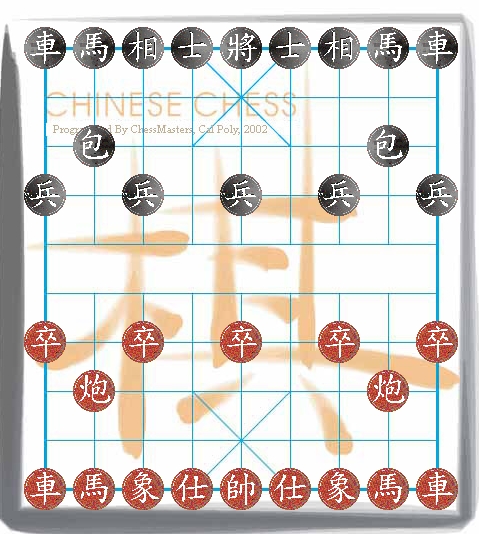| Image |
Name
(Western Equivalant) Pronuciation (Mandarin) |
Number
On Each Side |
Abbreviation |
| 將 or 帅 |
General (King)
jiang1/ shuai |
1 |
K |
| 士or 仕 |
Mandarin or
Assistant (Queen) shi4 |
2 |
M or A |
| 象 or 相 |
Elephant
(Bishop) xiang4 |
2 |
E |
| 马 |
Horse (Knight) ma3 |
2 |
H or N |
| 车 |
Chariot (Rook) che1 |
2 |
R |
| 炮 |
Cannon pao4 |
2 |
C |
| 卒 or 兵 |
Soldier (Pawn) zu2/bing1 |
5 |
P |
